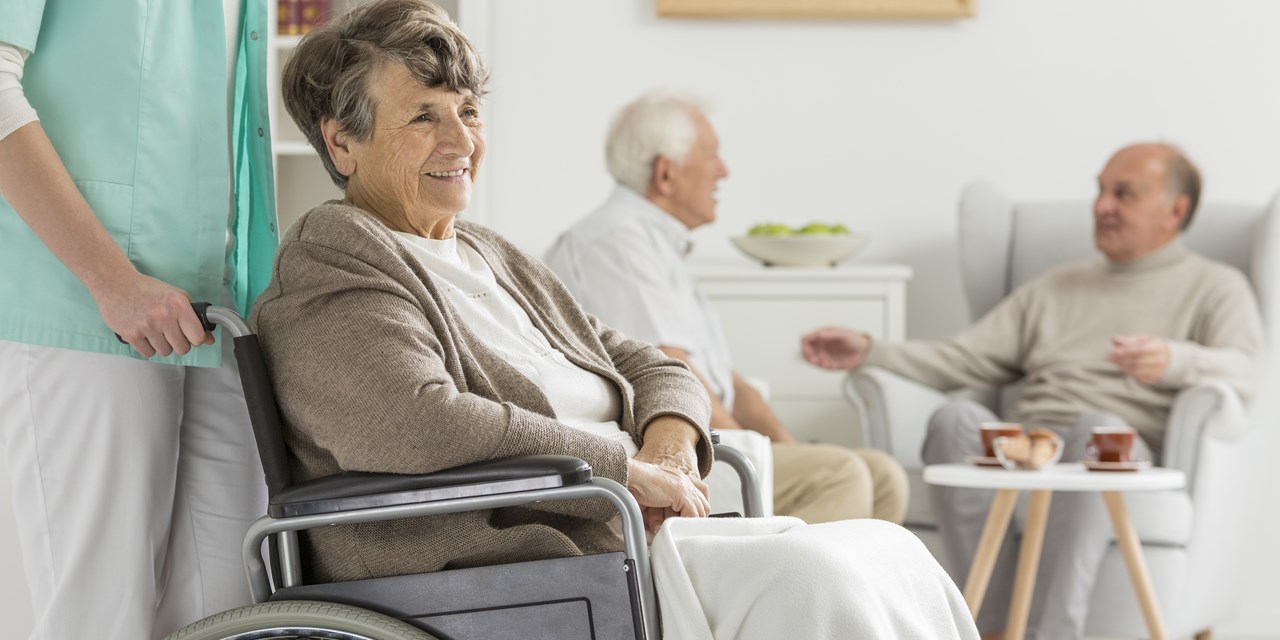Country selector

Corporate
Country Selector: Corporate
Magnus Nilsson, Ascom’s Global Product Manager for long-term care, discusses the ways technology can help to positively impact the demands on care staff and the quality of care they can provide to residents.

Common challenges faced by staff in the long-term care sector
The biggest challenge for carers is to have time to do all the things they need to do, despite constant interruptions. They have regular duties like taking vital signs, helping to shower and dress residents, and to feed them. At the same time, they get constant requests to assist colleagues or other residents, or from relatives calling, and so on. This pattern happens all day long, day after day.
When constant interruptions are well managed through technology, fewer things are missed. We are humans: we should not forget that. If technology is designed for assisting us, then we will have a successful solution. Our alert management solution, for example, gives carers and clinicians the ability to access, send and receive alerts from their existing nurse call system to their mobile phones, to help them manage the demands on their time.
Improving communication and collaboration
If you’re constantly interrupted, how will you keep track of what you need to do, to help ensure that nothing gets missed? That’s where a mobile working tool comes in. Providing notification alerts at the right time and in an organized way, is one of the main benefits of an alert management solution.
It’s also about collaboration in the care team. If you don’t have time to carry out all your tasks, then an alert management solution can build a collaborative work environment. For example, where you can get help from your colleagues, by calling for assistance, passing on the alert to your colleague to assist you or via automatic escalation, if you’re not able to respond quickly.
When considering accountability for residents’ care, there are many models out there. Sometimes one of the care team will be totally responsible for a resident; elsewhere they are responsible for only some of the duties and tasks relating to that resident. Specific models can be configured in an alert management solution to fulfil the needs of a specific care organisation. Even though we work with long-term care facilities globally, every solution is adapted to local needs.
Different members of the care team – like care assistants and nurses – have different duties and so need specific information and alerts. The set-up of the workflows within our systems automatically handles this distribution of alerts – getting the right information to the right member of staff.
Changing staff
The challenges of recruitment and retention of staff are an international problem. Low staff numbers and high staff turnaround is an issue for care facilities in many countries. While staff can constantly change, having the right technology can provide stability and consistency: a predefined way of working that defines responsibilities so that when a new staff member joins the team, it’s easier to train them, and provide a tool to help them work efficiently and more effectively.

A reactive tool now – working towards a proactive future
Technology is designed to reduce stress and to better manage interruptions – that’s what the solutions are focussed on today. It’s also important to provide a clear view on accountabilities and alert management technology can take care of that, by creating a collaborative environment, underpinned by robust digital tools. This means that staff feel that are working together and taking care of the residents as a team, even though as a staff member you still retain your own care accountability.
This kind of technology is going through a transformation. Currently, we approach care from a reactive state - when something has happened, an alert is sent and staff react. In the future, we will be able to help care staff to work in a more proactive way by empowering them with the digital tools which will alert them when something will, or could potentially, happen.
For example, falls. A significant challenge for all long-term care facilities. Currently, an alert is triggered only after a fall happens, potentially causing an injury to a resident. In future, we could send alerts in advance based on predefined criteria.
Another important aspect of using this technology is recognizing that it's about sharing knowledge to understand the situation. If you spread that understanding and alert someone about something happening in one place (for example, an incident occurring on the other side of a corridor), you need to convey that information in the appropriate context to the person receiving the alert.
For example, we can set different priority levels and use color coding to show the receiver, at a glance, the severity level. We could also add contextual information in the message. In the future, we’re working on including camera streams to further build this understanding.
Striking the right balance between safety and patient dignity for every unique resident
Ultimately, alert management solutions are designed to increase safety for individual residents who need care and for the staff giving this care. Providing proactive alerts could further increase safety.
Of course, dignity and independence are also important considerations. Some residents may think ‘I’m not old, I can take care of myself.’ Residents often do not like to be bothered by someone that they don’t have a relationship with. However, the line between dignity and safety will be different for everyone: a resident feeling fragile and afraid of being alone may not ask for assistance, and others may get annoyed, if they’re interrupted. By recognizing this balance between safety and dignity varies so much between individuals, alert management systems can help to provide truly person-centered care.
The technology used in the long-term care sector needs to stay in line with society’s expectations. That’s why, through research both with care staff and with residents, we really need to find and understand this evolving balance.
It’s an important challenge for technology providers – addressing questions around privacy and dignity, and where do they border with safety?
We have a user experience design team, which undertakes user research. Previously, this work has focused on care staff. I think we need to shift this focus to include residents in care home organizations, to help build our knowledge so that we can provide even better alert management solutions for the future.
Peace of mind through contact-free care
An additional benefit of using an alert management system since the onset of Covid-19 is the ability to send all kinds of important alerts – from fire alarms to meal provision for care residents. Under minimal contact restrictions, these features of our mobile solution have supported the delivery of high-quality care.
Of course, there are two sides of this coin – sometimes care residents just want someone to talk to and sometimes they need something. We are social human beings and minimizing the situations to meet each other can be problematic. However, solutions driven by intelligent technology can really help care staff to define when interactions are essential tasks or those which have social benefit for residents.